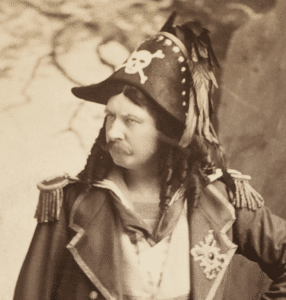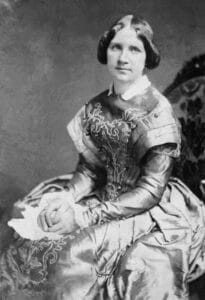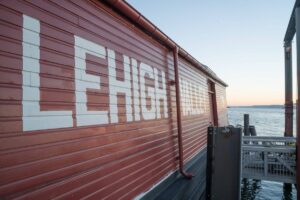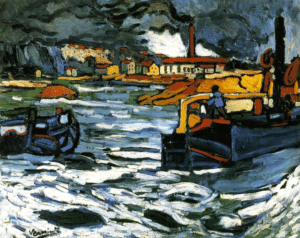To High-C in Ships
By Mark Schubin
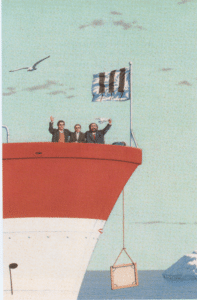
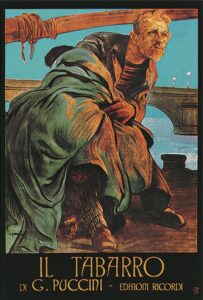
Watercraft have played many roles in opera. In 2023, Lürssen, a German shipbuilder, launched a superyacht named Opera, almost 500 feet long (the Ambrose is just 135 feet long). More than four centuries earlier, Claudio Monteverdi’s 1608 opera L’Arianna began with the arrival of Theseus’s ship on the island of Naxos. The Metropolitan Opera: Live in HD has been transmitted by satellite to multiple ships at sea, including RMS Queen Mary 2. When Il tabarro premiered at the Met, the audience wore evening dress; penguins seem to wear tuxedos all the time, so the book Some Folk Think the South Pole’s Hot: The Three Tenors Play the Antarctic, by Elke Heidenreich (translated by Aubrey M. Woolman), illustrated by Quint Buchholz, is about the Opera Ship from Old Vienna offering those birds a production of Giuseppe Verdi’s La traviata, with (spoiler alert) José Carreras as young Alfredo, Plácido Domingo as his father Giorgio, and Luciano Pavarotti as Violetta. The Opera Ship’s arrival atAntarctica is shown above right.
One of the most famous operas about ships is Richard Wagner’s Der fliegende Holländer (The Flying Dutchman). In a funnier vein are the Gilbert & Sullivan works HMS Pinafore and The Pirates of Penzance. The role of the Pirate King in the latter was written for Brooklyn journalist and baseball player John Clark, who, when he went from first base to primo basso, performed as Signor Brocolini (left). More serious works involving vessels (but not with the mystical elements of The Flying Dutchman) include Benjamin Britten’s operas Peter Grimes and Billy Budd, the latter based on Herman Melville’s novella written in New York City.
This blog has previously described the creation of watercraft on which operas were performed. They ranged from powered showboats to uncovered and covered barges, the latter not necessarily smaller than the former. The Jersey City Opera Barge was said to be able to accommodate an audience of a thousand, and, when it was moored at Thatched Cottage Garden, the “Swedish Nightingale,” soprano Jenny Lind (right) reportedly performed on it. She made her American debut at Castle Garden, then an island off lower Manhattan, previously owned by Thatched Cottage Garden owner Judge Samuel Lynch.
There is still a barge in New York City on which opera has been performed. It’s the all-wooden Lehigh Valley Railroad barge 79, moored in Red Hook, Brooklyn, as part of the Maritime Museum. Floating Opera NY performed Claude Debussy’s Pelléas and Mélisande there (photo at left by Tony Gale), and Vertical Player Repertory used it as the site for their 2007 production of Il tabarro.
Which is a more appropriate site for Il tabarro, the Red Hook barge or the East River lightship? The opera’s setting is said to be a barcone, which translates to barge, but the barges on the Seine at the time looked nothing like LVRR 79, as seen in Maurice de Vlaminck’s 1906 painting Barges on the Seine, shown at right. Furthermore, the Seine is a river, and that’s what the East River is called (even if it’s actually a tidal estuary); Red Hook is on Upper New York Bay. But a lightship? What do maritime lights have to do with opera?

Peter Maxwell Davies’s opera The Lighthouse is based on the true story of a lighthouse-supply ship arriving at a lighthouse and finding its crew gone. Another of Britten’s operas, Noye’s Fludde, is about a very old, very big ship, Noah’s Ark; it was presented in New York City in 2013 by the Filomen D’Agostino Greenberg Music School for the visually impaired, at the time affiliated with the Lighthouse Guild. Another New York City producer is the Lighthouse Opera Company. In Connecticut, Salt Marsh Opera has performed at the Stonington lighthouse. In Dublin, the Lighthouse Cinema has carried on-screen performances by both the Metropolitan Opera and the Royal Opera. And then there’s Toronto’s Tapestry Opera. On March 25, 2023 they produced the world premiere of the opera Of the Sea, about underwater kingdoms populated by people thrown overboard from ships of the Middle Passage. The libretto is by Kanika Ambrose (right, in a portion of a photo by Dahlia Katz).
Now you know more about operas and watercraft and why the Ambrose lightship at the South Street Seaport Museum’s pier 16 is an appropriate site for On Site Opera’s performances of Puccini’s Il tabarro. But the opera’s title refers to a cloak, not a barge. Why? You’ll know when you see it.
